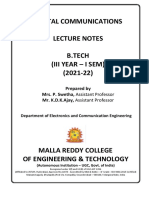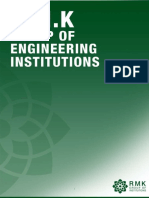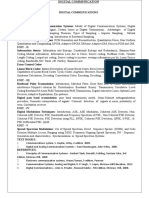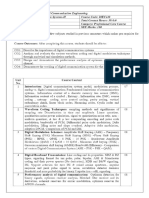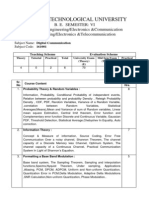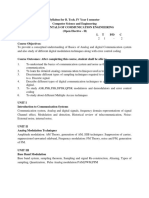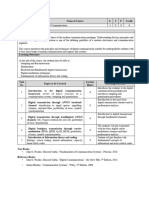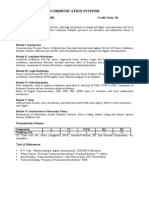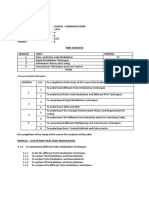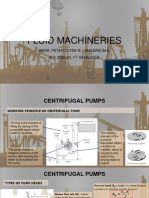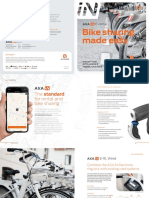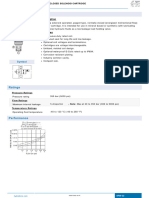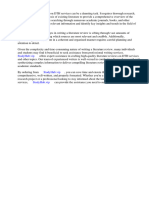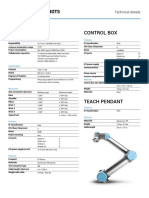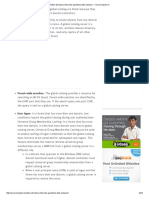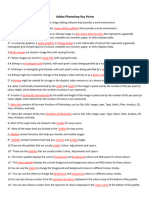0% found this document useful (0 votes)
342 views4 pagesDigital Communication Syllabus
This document provides details about the 5th semester Digital Communication course for the Diploma in Electronics Engineering program. The course aims to help students understand digital communication systems, information theory, pulse coding techniques, error detection and correction methods, digital modulation techniques, and multiplexing schemes. The course has 6 units and includes both theory and practical sessions. Assessment includes internal and external exams with theory and practical components. Prerequisite and reference materials are also listed.
Uploaded by
nimish kambleCopyright
© © All Rights Reserved
We take content rights seriously. If you suspect this is your content, claim it here.
Available Formats
Download as PDF, TXT or read online on Scribd
0% found this document useful (0 votes)
342 views4 pagesDigital Communication Syllabus
This document provides details about the 5th semester Digital Communication course for the Diploma in Electronics Engineering program. The course aims to help students understand digital communication systems, information theory, pulse coding techniques, error detection and correction methods, digital modulation techniques, and multiplexing schemes. The course has 6 units and includes both theory and practical sessions. Assessment includes internal and external exams with theory and practical components. Prerequisite and reference materials are also listed.
Uploaded by
nimish kambleCopyright
© © All Rights Reserved
We take content rights seriously. If you suspect this is your content, claim it here.
Available Formats
Download as PDF, TXT or read online on Scribd
/ 4








